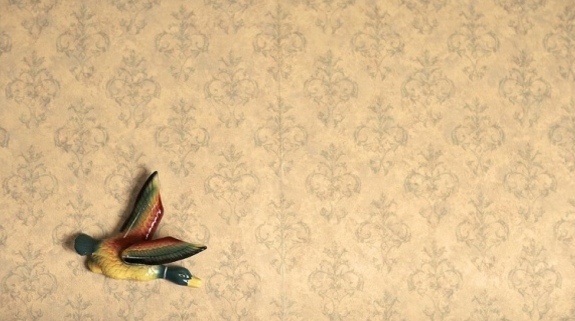Cold, damp and filled with toxins—we sure know how to build ’em. Many of our houses seem better suited to growing toxic moulds than raising healthy children. Attack the problem with the typical arsenal of household cleaners and you’re likely to add to the unhealthy conditions. Are our homes making us sick?
Heather Thompson was pregnant with her second child when she, her husband and their six-month-old moved into a 90-year-old bungalow in Invercargill. “The house seemed okay at the time,” recalls Heather, “but in hindsight I realise it was fundamentally damp.”
The Thompson’s house was a flood house—so-named after a flood of biblical proportions swamped the region in 1984, forcing the evacuation of 1,400 homes. What later became the Thompson’s family home stood in water up to the top of its windows.
The house dried out, but no insulation was added. “When we moved in there was no insulation apart from some old batts in the ceiling—and no space to get under the house,” says Heather. Swollen wooden joinery was replaced with aluminium, ironically only compounding the house’s problems; aluminium joinery is a poor insulator, as heat is lost through the frames.
Living in a damp house took its toll. Heather’s daughter developed chronic bronchitis, and at ten months her son was diagnosed with asthma. “He was a nocturnal asthmatic, so many hours were spent with him during the night as he coughed and cried and was unable to breathe,” she says. “He suffered chronic coughs and colds, and lost a lot of time from kindy and later school. We both took a lot of sick days.”
Three-and-a-half years ago the family moved to an elevated home with insulation in both the floor and ceiling, a woodburner and double-glazed windows. At the time Heather’s son was on daily medication but since the move his asthma has completely cleared up. He hasn’t needed any medication since.
Heather and her family are among the lucky ones. In her job with the Southland branch of the Asthma and Respiratory Foundation, Heather sees the same cycle of cold, damp houses and sick children repeated too many times for comfort. But the problem of New Zealand’s sick homes is not confined to old flood houses, or Invercargill. The shameful fact is that many of our homes don’t need a flood to make them damp—they’re damp by design.
And it’s making us sick. In a 2008 ShapeNZ housing survey, more than one in four New Zealanders said the home they lived in had contributed to their sickness. The root cause? No less than a million of our 1.6 million homes are cold, damp and difficult to heat.
The New Zealand Business Council for Sustainable Development (NZBCSD) recently commissioned a far-reaching study of the issue, and their 2008 report on the topic makes grim reading. Nearly two-thirds of New Zealand’s homes were built before insulation became a legal requirement in 1979. Though most of our houses have some insulation, it’s often been in place for years and is no longer very effective. About 375,000 New Zealand homes have inadequate ceiling insulation and over one million have inadequate underfloor insulation. Most homes lack double-glazing and insulation in the walls, and many are oriented the wrong way—typically facing the road rather than the sun.
Something’s rotten
We’ve all heard about leaky homes—even if we’ve been fortunate enough not to live in one. From the 1990s on, countless houses were either poorly designed or had building products that were inappropriately installed. The sorry outcome: a swag of houses that simply don’t stand up to New Zealand’s weather conditions, are damp and chronically mouldy. But the problem of mould is not just confined to leaky homes. Nearly half our houses are mouldy, says the NZBCSD.
Mould and mildew are more than a big headache. Some moulds, such as the Stachybotrys fungi, are highly toxic. But inhaling large numbers of spores from less noxious varieties can also have serious health implications. Respiratory problems (wheezing and shortness of breath, flu-like symptoms, nasal and sinus congestion, eye, nose and throat irritations, a dry, hacking cough), skin rashes and even depression are all linked to living in damp, mouldy homes. Such conditions particularly affect babies, old people and those with weakened immune systems. Mould and mildew also exacerbate illnesses such as asthma or bronchitis.
Mould can be a problem in homes of all ages. Not all modern houses leak but, ironically, watertight homes are often relatively airtight too, and unless they’ve been designed to allow for passive ventilation they are also candidates for mould. Older houses have more ventilation (most are just plain drafty), but the air coming in around windows and up through the floorboards can be cold and damp. Add steamy showers, cooking vapour, unvented dryers and unflued gas heaters, and you’re soon pumping in more moisture than can easily escape. In houses with no insulation, the walls and ceilings act like water sponges, attracting moisture from the air, says Albrecht Stoecklein of Right House, a Meridian Energy-owned company dedicated to raising the quality of New Zealand’s houses. And once moist air condenses, it leads to mould.
Trying to eliminate mould in such conditions can be like trying to hold back the tide. One of Heather’s clients lives in a 40-year-old state house that is both damp and plagued with severe black mould. The two youngest boys in the family have chronic respiratory problems, often to the point of being hospitalised. “Their mother is constantly cleaning to try to get rid of the mould, but when I visited her last Christmas I could see it was continuing to grow, even in summer,” says Heather.
It’s a vicious cycle. Clean your house with bleach, chlorine and other household cleaning heavies, and you’re likely to add more poisonous elements to an already unhealthy mix. Volatile organic compounds (VOCs) are found in common household cleaners as well as in some paints and paint thinners, plastic shower curtains, carpet backing, plastics, cosmetics and even personal hygiene products. Formaldehyde, a common VOC, is found in laminated furniture, particle board, foam insulations, shelving and even wall covers. According to the US Environmental Protection Agency (EPA), many homes have two to five times more air pollutants than the air outside.
VOCs are major contributors to the poor air quality inside our homes and have been linked to respiratory illness. A recent study from Curtin University in Western Australia showed that VOC levels were significantly higher in the homes of children with asthma, and that children who’d been exposed to fumes from common household cleaning products were up to four times more likely to develop asthma than those who were not.
In the past, women used natural cleaners and they’d routinely air homes by opening windows and letting fresh breezes blow through. “Times have changed,” says Mike Perrett, director of heat recovery ventilation company HRV. “For one thing, when most of our city’s houses were built there weren’t 40,000 cars driving through the neighbourhood each day.”
HRV consultants make 7,000 national in-home assessments per month. “In talking to the country’s homeowners it’s become clear that many people are now shutting up their houses and going off to work all day,” says Mike. And when we are home, concerns about security, privacy and air pollution deter us from leaving doors or windows open for any length of time. “Add damp conditions and lack of ventilation to the changing ways we are living, and what you can get is air loaded with dust and dust mite waste, particles of human skin and hair, pollens, chemicals, adhesives and smoke.”
Cold comfort
As well as being prone to mould, damp houses feel cold and are hard to heat. Without proper insulation the task’s even harder. The average New Zealand house is “scarily cold,” says Victoria University professor Robert Vale. “It’s badly insulated, has huge expanses of single-glazed glass, and is a nightmare to heat.” In terms of energy-efficient homes it’s “pretty much where the Scandinavians were in the 1960s.”
The comparison with Scandinavia reminds me of a Danish friend who complained that he’d never been as cold as when he spent a winter in Auckland— a tad embarrassing considering that the temperature hovers around zero on a typical winter’s day in Copenhagen.
But it’s hardly ever that cold here, right? Can’t we just put on a jumper in winter?
“New Zealand housing says as much about our world-famous ingenuity as it does about our tough pioneering spirit,” observed writer Andy Kenworthy recently in Idealog magazine. “Things like insulation, draft-proofing and efficient heating systems have traditionally been frivolous luxuries—strictly for those lacking the singlet, shorts and gumboot-wearing grit to make it through our South Pacific winters.”
“Insulation levels in New Zealand’s existing housing stock often compare to third world standards,” says Albrecht. The sorry fact is, though we might live in houses built for the tropics (‘bungalow’ was first an Indian concept, and villas—with their high ceilings, sash windows and wide verandahs—were surely designed with gin and tonics rather than bitter southerlies in mind) our climate is subtropical at best, and indoor temperatures frequently dip to unhealthy levels. The World Health Organisation recommends a minimum temperature for living areas of 18°C or 21°C for babies, children or elderly people. Sixteen degrees can strain the respiratory system and heart—but according to a 2008 study by the Centre for Research Evaluation and Social Assessment (CRESA), more than one-fifth of Kiwi living rooms are colder than 16°C on a typical winter’s evening.
Heating an uninsulated home is expensive. Houses are the world’s largest consumers of energy and the average New Zealand household uses over one-third of its total energy trying to keep warm. According to the Department of Building and Housing, that equates to approximately $1,800 a year ($150 a month) spent on electricity and gas heating in the typical home.
Our heating choices are often quite ad hoc. High-output devices may be cheap to buy, but are often very expensive to run. Seventy-two percent of Kiwi homes use portable electric heaters, which are convenient but inefficient. Even worse, one-third of New Zealand households use unflued gas heaters. These fill unventilated rooms with dangerous levels of nitrogen dioxide, formaldehyde and carbon monoxide, and pump litres and litres of water vapour into the air. This only makes a damp house damper and further exacerbates asthma. “It’s why such heaters have been banned elsewhere in the world,” says Wellington Medical School professor Philippa Howden-Chapman.
Joining the dots
One in six adults and one in four children suffer from asthma in New Zealand, and associated hospitalisation rates have more than doubled over the past 30 years. Air that is cold, or polluted with dust mites, moulds or fumes triggers asthma. It’s not rocket science to make the link between our cold houses, their poor air quality, and our nation’s high asthma rate—the second highest in the world just behind the UK. Nor does it take a genius to see that, in addition to our appalling asthma rate, the myriad other health problems caused by living in cold, damp houses are making us poorer, sicker and less able to function effectively.
Every day 780 people don’t turn up for work and 50 people are hospitalised because they live in damp, cold homes, says the NZBCSD. This equates to at least $17 million a year in lost production. Then there are the countless hours lost by kids too sick to attend school or simply too tired to concentrate after a night’s coughing.
“The present poor energy efficiency of our houses in New Zealand has had serious public health consequences,” says Philippa. When the temperature drops in winter in New Zealand, there are approximately 1,600 more deaths than in summer. It’s no exaggeration to say our homes are killing us.
Want more?
Check out these websites when building or re-fitting
your home:
www.energyadvice.org.nz www.hybridhomes.co.nz
www.ecodesignadvisor.org.nz www.rinnai.co.nz
www.consumerbuild.org.nz www.dbh.govt.nz
www.warrenandmahoney.com www.ebode.co.nz
www.lockwood.co.nz www.absa.net.nz
Sources
- Better Performing Homes for New Zealanders: Making it happen (The New Zealand Business Council for Sustainable Development, 2008)
- Living Green: The New Zealand Handbook for an Eco-friendly, toxin free, sustainable life, by Annmaree Kane and Christina Neubert (New Holland Publishers, 2008)
- Housing, Heating and Health Study: Heater Analysis (University of Otago Wellington School of Medicine and Health Sciences, September 2005)
- www.righthouse.co.nz
- www.energywise.govt.nz
- www.smarterhomes.org.nz







